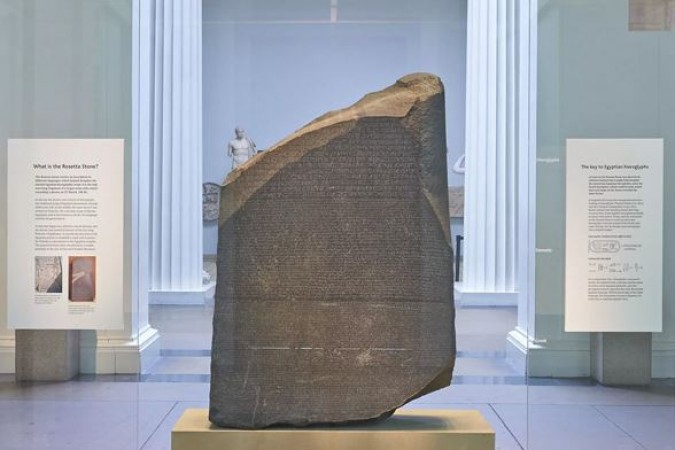
Introduction
The Rosetta Stone is an iconic artifact that holds immense significance in the field of Egyptology. Discovered in 1799 during Napoleon Bonaparte's military campaign in Egypt, this stone tablet became a key to unlocking the secrets of ancient Egyptian hieroglyphs. With its unique inscription in three different scripts, the Rosetta Stone provided a breakthrough that allowed scholars to decipher one of the most enigmatic writing systems in human history. This article delves into the fascinating story of the Rosetta Stone, its historical context, and the pivotal role it played in unraveling the mysteries of ancient Egyptian civilization.
1. The Discovery of the Rosetta Stone
The Rosetta Stone was unearthed in the small Egyptian town of Rosetta (modern-day Rashid) by a French soldier named Pierre-François Bouchard. During the construction of Fort Julien, Bouchard stumbled upon a slab of black basalt inscribed with mysterious writings. Recognizing its potential significance, he alerted his superiors, and the stone was subsequently transferred to French scholars for examination.
2. Inscriptions on the Rosetta Stone
The Rosetta Stone stands out due to its trilingual inscription. It contains a decree issued in 196 BCE by King Ptolemy V, written in three scripts: hieroglyphs, demotic (a simplified script used for everyday purposes), and ancient Greek. This unique combination allowed researchers to compare the three versions and decipher the hieroglyphic script.
3. The Quest for Decipherment
For centuries, ancient Egyptian hieroglyphs had remained a mystery, as the knowledge of reading and writing this script had been lost over time. Scholars, such as the French linguist Jean-François Champollion, dedicated their lives to deciphering this ancient writing system. The Rosetta Stone provided Champollion with the crucial clues needed to crack the code.
4. Champollion and the Decipherment
Jean-François Champollion, a brilliant linguist and Egyptologist, meticulously studied the inscriptions on the Rosetta Stone and made significant progress in deciphering the hieroglyphs. By comparing the Greek text, which was already understood, with the corresponding hieroglyphic symbols, he successfully identified several phonetic sounds and established the key principles of hieroglyphic writing.
5. The Legacy of the Rosetta Stone
The decipherment of ancient Egyptian hieroglyphs revolutionized the understanding of Egypt's rich history and culture. The Rosetta Stone served as a bridge between modern civilizations and the ancient world, allowing researchers to unlock countless inscriptions and texts from the Pharaonic era. It opened up new avenues for studying Egyptian religion, literature, and historical accounts.
6. Preservation and Display
After its discovery, the Rosetta Stone was transferred to the British Museum in London, where it remains one of its most treasured exhibits. The stone is prominently displayed, allowing visitors from around the world to marvel at its inscription and appreciate its pivotal role in deciphering the hieroglyphs.
7. Controversies and Repatriation Debate
The ownership and display of the Rosetta Stone have sparked debates and controversies over the years. Some argue that it should be returned to Egypt as a symbol of cultural heritage, while others believe it should remain in the British Museum, accessible to a global audience. The repatriation debate continues to be a topic of discussion among scholars, archaeologists, and museum curators.
Conclusion
The Rosetta Stone stands as a testament to human curiosity, perseverance, and the power of linguistic analysis. This ancient artifact, with its trilingual inscription, provided the key to unlock the mysteries of ancient Egyptian hieroglyphs. Through the efforts of scholars like Jean-François Champollion, the decipherment of hieroglyphs has enriched our understanding of ancient Egypt and allowed us to delve deeper into its captivating civilization.
The Pitfalls of Excessive Skin Care: Understanding the Unintended Consequences
The Power of Confidence: Embracing Your Inner Strength
Unveiling the Submerged Mysteries: Dwarka's Ancient City Resurfaces Through Scientific Exploration